Known for its giant Reclining Buddha, its history and its traditional healing practices, Wat Pho Temple is one of Thailand’s most unique religious monuments. In this edition of Plan Your Trip, we’ll help you organise your Wat Pho visit, including handy directions, tours and ticket options.
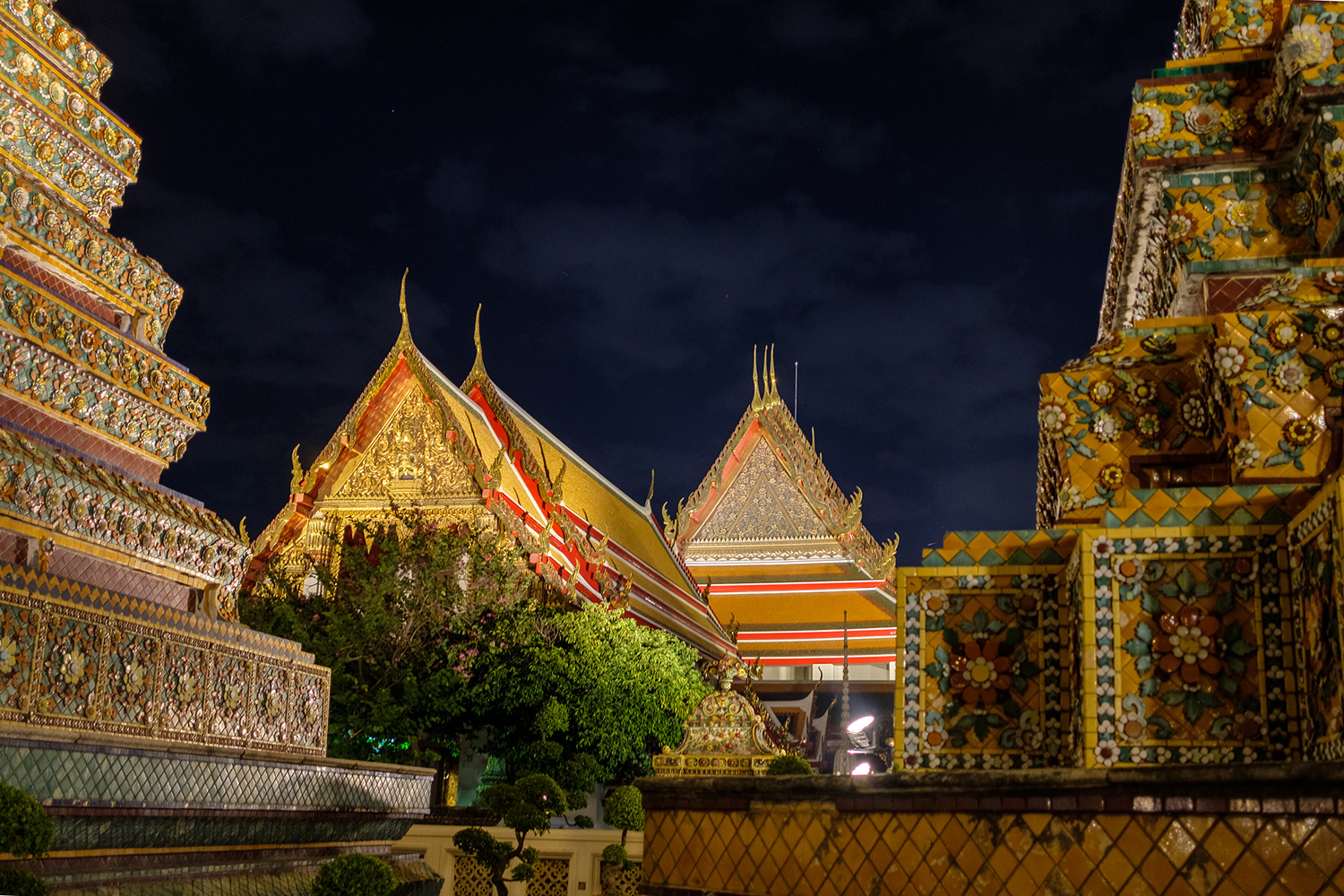
Wat Pho at night (Photo: Mike Lapidakis via Flickr / CC BY 2.0)
If you only visit one temple during your visit to the Thai capital, make it Wat Pho. Dating back as far as the 16th century, it is Bangkok’s oldest surviving holy site, even predating the shift of the Siam capital to the city when Burmese invaders overran Ayutthaya. At this point, the early kings favoured Wat Pho and ordered the expansion of the temple. This legacy is evident in the colourfully painted chedi (stupas), hundreds of bronze Buddhas and elaborate bot (ordination hall).
King Rama III (1824-51) added what is perhaps the site’s most revered artefact: the Reclining Buddha, a 46-metre (150ft) gilded statue whose feet are inlaid with 108 laksana, auspicious signs of a Buddha rendered in mother-of-pearl. Lining a wall nearby are 108 metallic bowls, which are said to bring luck to those who place a coin in each one. Although given the number of bowls, perhaps not wealth to the giver. This auspicious number emanates from Hinduism, where it is believed to represent the universe, 1 being a single entity, 0 nothingness and 8 infinity.
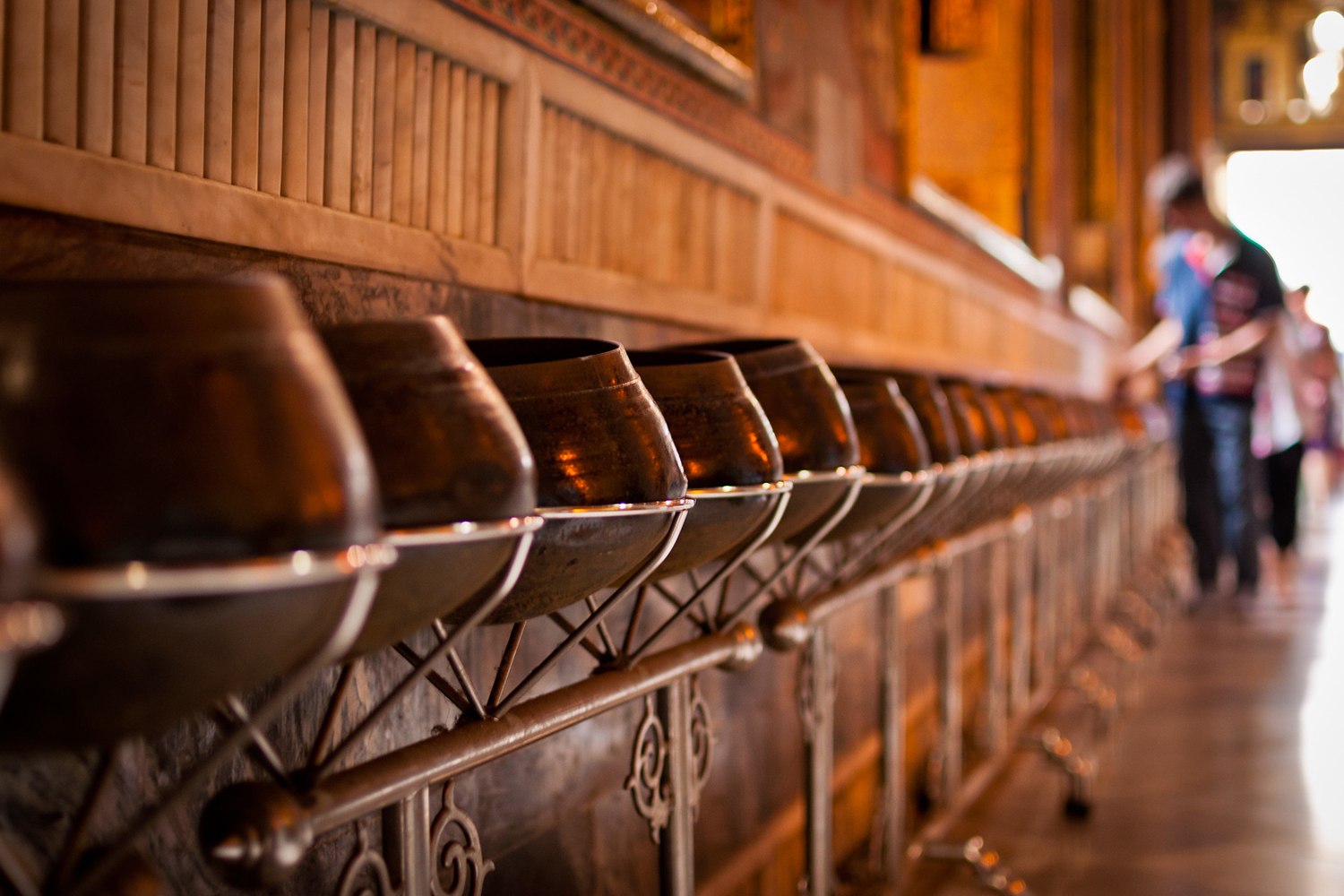
Collection bowls at Wat Pho (Photo: Mark Fischer via Flickr / CC BY-SA 2.0)
Another legacy of King Rama III at Wat Pho (which is officially, and confusingly, named Wat Phra Chetuphon) are the lessons adorning the walls of the courtyard in subjects like literature and astrology. This led to the temple being seen by some as the city’s first university and the teaching continues today at the Watpo Thai Traditional Massage School, where you can get an excellent hour-long Thai massage, complete with the unusual contortion-like positions that can feel uncomfortable at the time but will likely lead to you practically floating out of the temple.
Hours & Directions
Wat Pho is open daily from 8.30am–5pm, while the Watpo Thai Traditional Massage School operates Mon–Sat from 10am–5pm at some of the best rates you’re likely to find anywhere in Bangkok.
Wat Pho is surrounded by some of Thailand’s most important buildings, with the Grand Palace just to the north and Museum Siam to the south. The temple overlooks the Chao Phraya river, with Wat Arun on the opposite bank. If you’re using river transport, get off at Tha Tian pier, which is served by Chao Phraya Express boats running every 15 minutes on average. Walk straight from the pier, past the Tha Tian Market along Thai Wang Alley and there’s a smaller entrance to Wat Pho on your right. The main entrance is on Chetuphon Road to the south of the main temple. It’s just a couple of blocks away from the Sanam Chai stop on the blue line of Bangkok’s excellent, modern MRT metro.
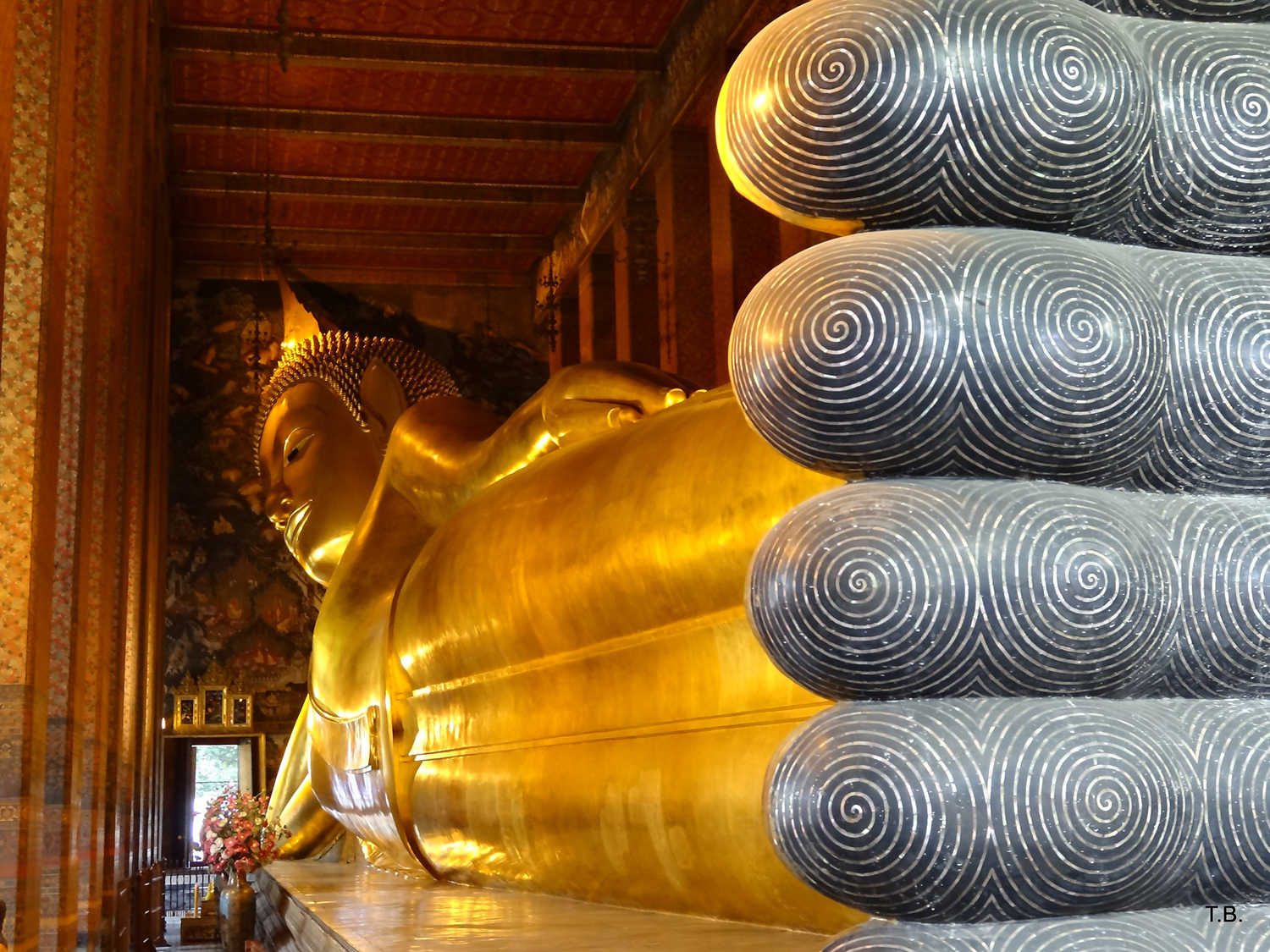
Wat Pho’s Reclining Buddha (Photo: Thomas Ballandras via Flickr / CC BY 2.0)
Tickets & Tours
There are plenty of different ways to experience Wat Pho, depending on your preferred mode of travel, from the DIY approach to the fully-organised day-trip that often takes care of your entry tickets and transportation from your hotel so that you don’t have to. Here are some of the options available, as well as a look at how to book them. Please be wary of touts outside the temple who may try to convince you that the temple is closed or that you have to buy an entrance ticket from them, as this is not the case.
If you are looking to make your own way to the temple and pay on arrival, entry tickets to Wat Pho can be bought at the main entrance for around $4, while an hour-long massage costs an additional $15.
A great alternative that will save you plenty of time and hassle is the skip-the-line entrance ticket that includes hotel pickup and transfer to the site. It costs $25 for the transportation and entry. To learn more about this option and to book your ticket, please click here. It is valid for all hotels in Bangkok. Please note that the return journey to your hotel is not provided.
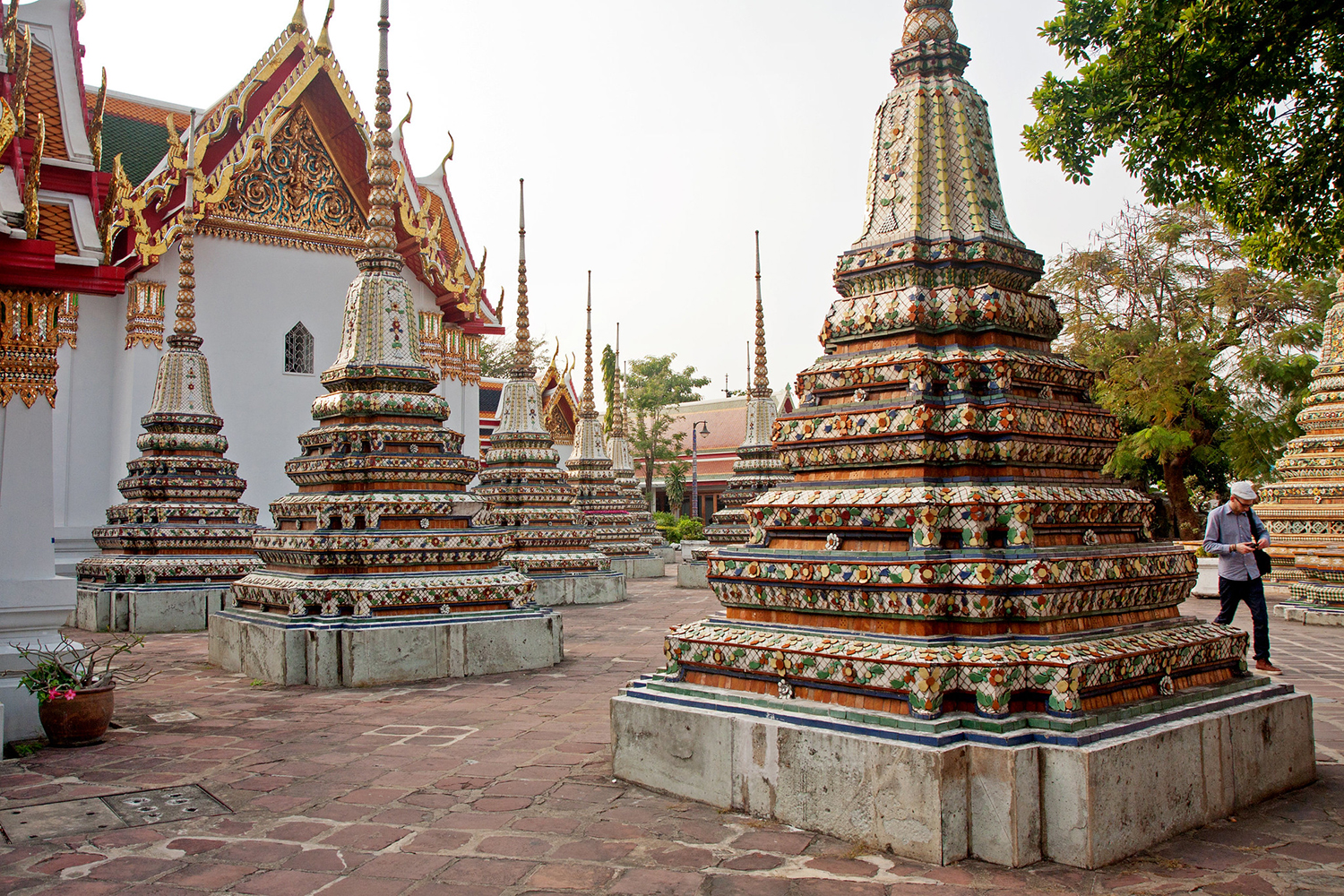
Colourful chedi at Wat Pho (Photo: Andrea Schaffer via Flickr / CC BY 2.0)
Another great way to see Wat Pho, and indeed to learn more about the temple’s history and the Reclining Buddha’s significance, is to take a guided tour. Broadly speaking, the best tours available usually incorporate Wat Pho into a longer itinerary, providing the entry tickets and transportation, along with a knowledgeable tour guide. Below are three great options that provide a unique variation on a Wat Pho tour.
Bangkok Flexi Walking Temples Tour – $68 per person – Taking advantage of the fact that the Grand Palace, with its Temple of the Emerald Buddha, Wat Pho and Wat Arun are all situated close together, this walking tour not only gives you more insight into these remarkable temples, but also takes you through some of the other top sights in the area, like the Amulet Market, which sells items that play an important and integral role in Thai faith. All admission fees are included in the price. Book at Getyourguide.com.
Bangkok Temple Tour – $73 – Operating with a similar itinerary to the above tour, but allowing for a little more time at each temple is this guided tour. Visit the Temple of the Emerald Buddha, followed by the rest of the sprawling Grand Palace complex, before heading over the Chao Phraya to Wat Arun. Finally head back to the eastern bank of the river to finish up at Wat Pho and the Reclining Buddha. Hotel pickup in Central Bangkok is available, although public transport is used to move around. Book at Viator.com.
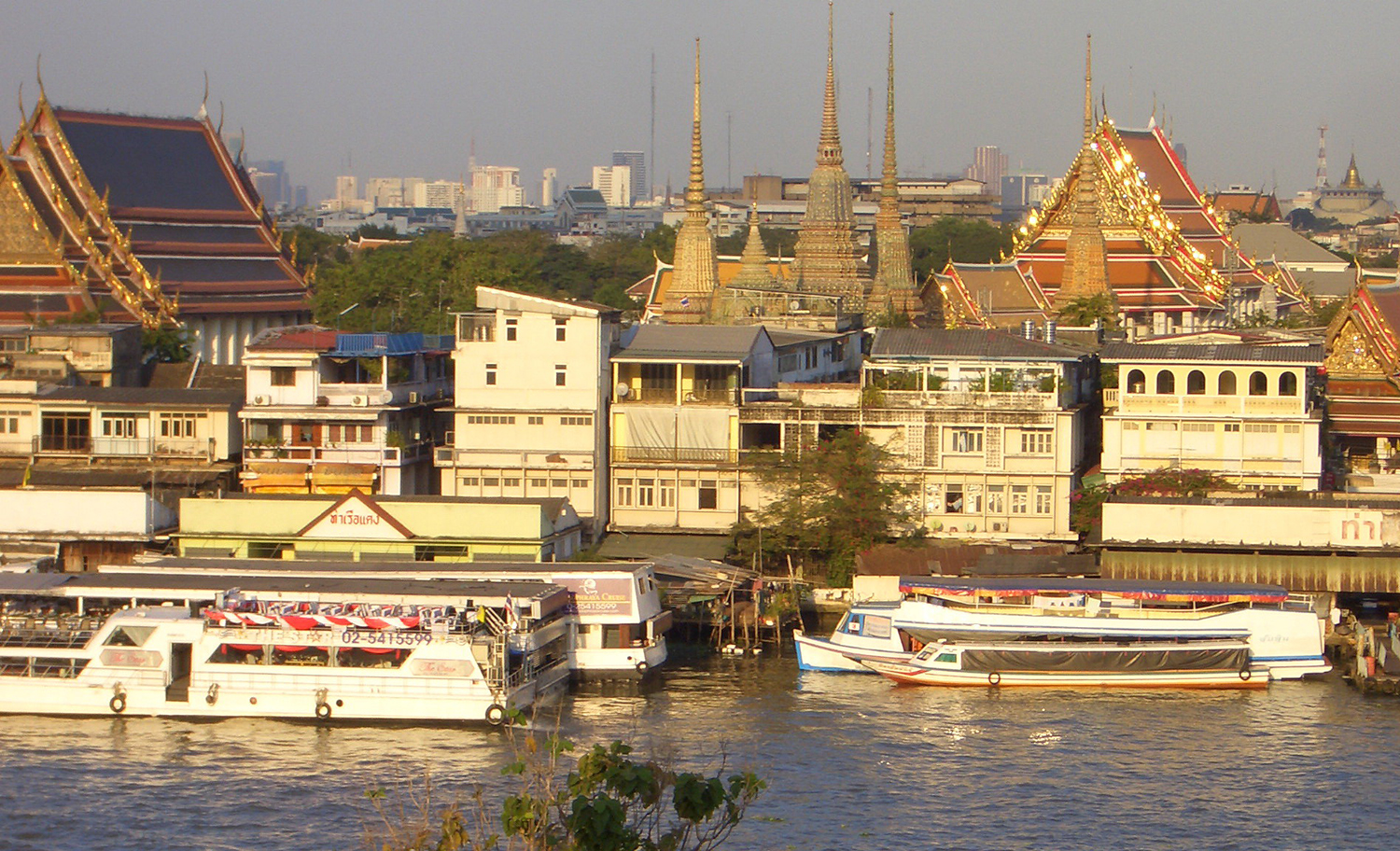
Wat Pho by the Chao Phraya River (Photo: Reinhard Link via Flickr / CC BY-SA 2.0)
Bangkok Temple Tour and Cruise – $79 – This tour offers a cruise of the intricate network of canals around which much of Bangkok is arranged, instead of the trip to Wat Arun included in the tours above. The cruise element is on one of the colourful, and characterful, longtail boats, which can navigate the narrower khlong (canals) more easily. This really gives you an insight into another side of Bangkok, where people still live and even go to market beside and sometimes on the water. Book at Getyourguide.com.